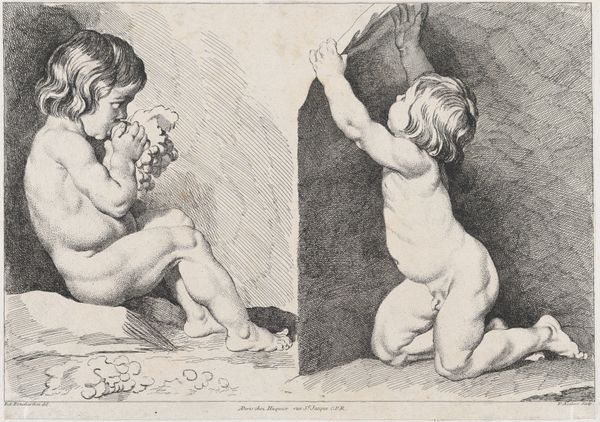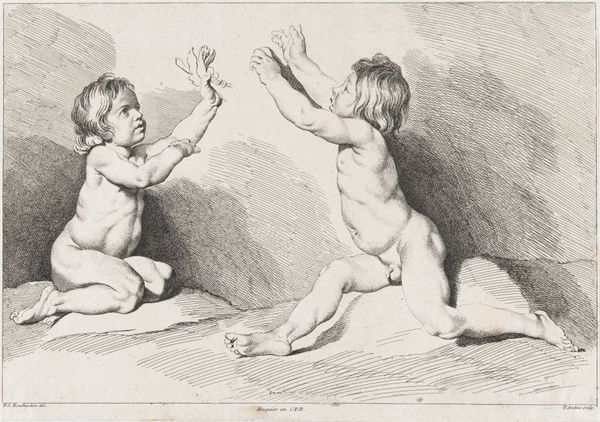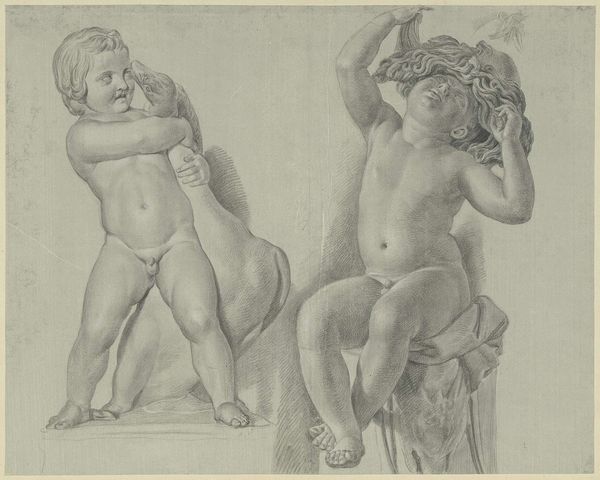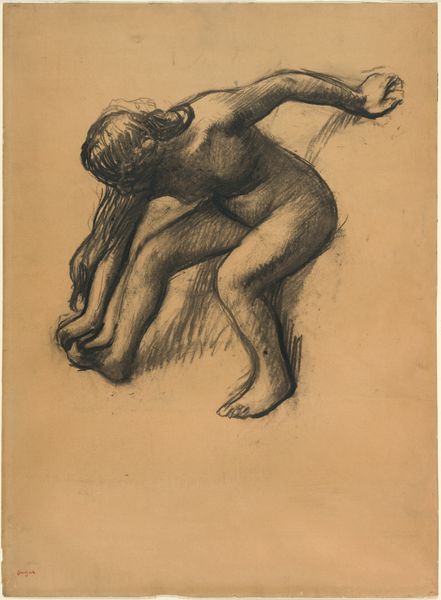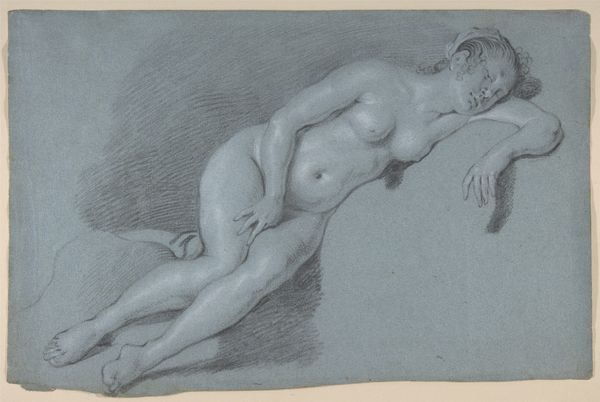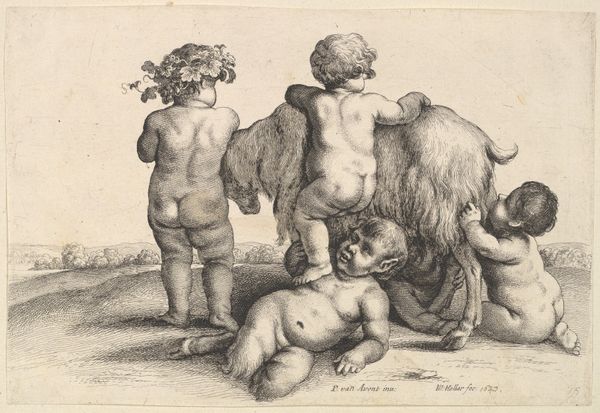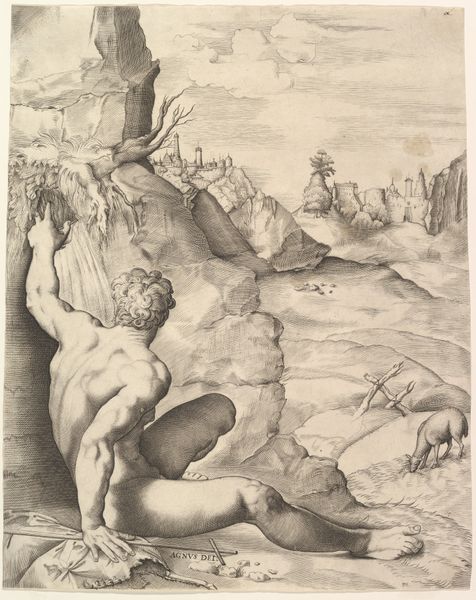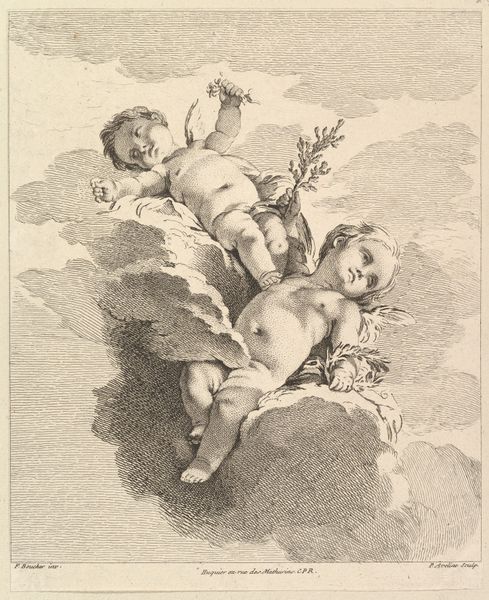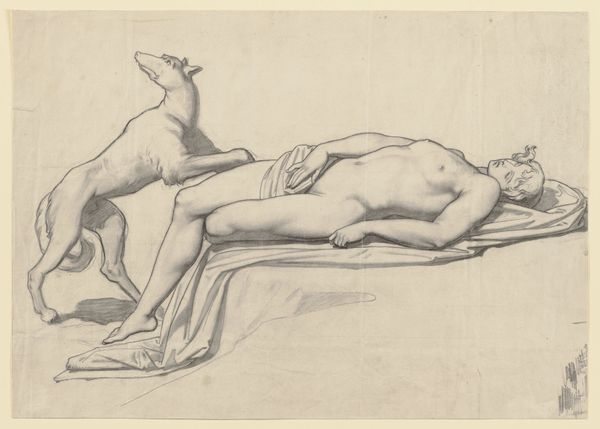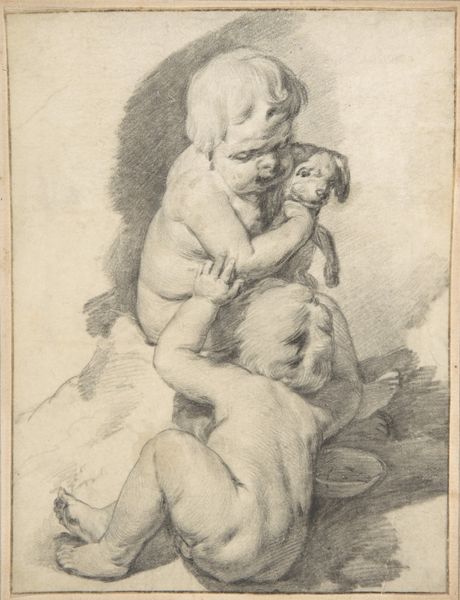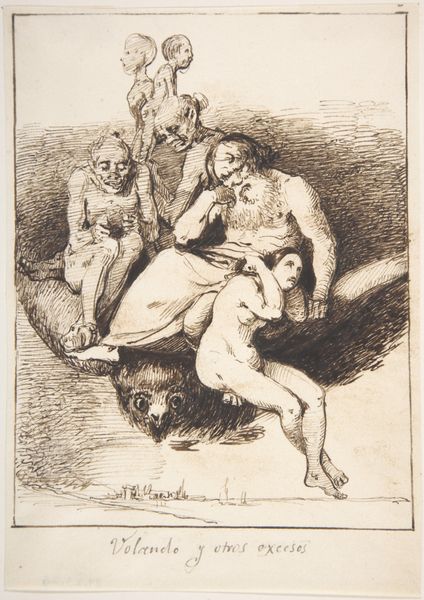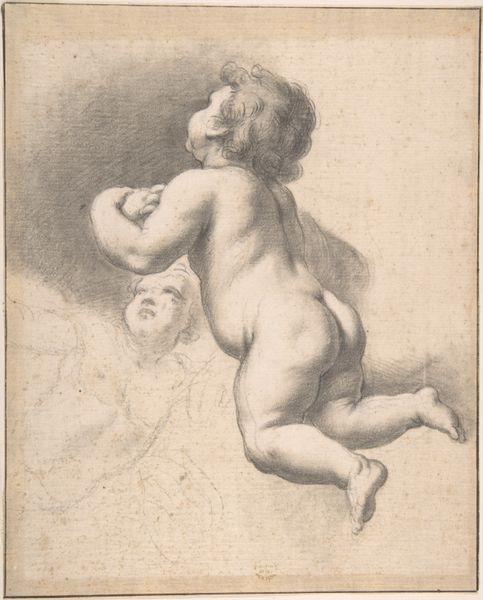
Two nude children, one sleeping and the other holding a wreath, from New Book of Children 1720 - 1760
0:00
0:00
drawing, print, engraving
#
portrait
#
drawing
#
baroque
# print
#
child
#
pencil drawing
#
portrait drawing
#
genre-painting
#
nude
#
engraving
Dimensions: Sheet (trimmed): 15 3/16 × 10 1/16 in. (38.5 × 25.6 cm) Image: 14 5/8 in. × 10 in. (37.2 × 25.4 cm)
Copyright: Public Domain
Editor: This print, “Two nude children, one sleeping and the other holding a wreath, from New Book of Children” by Pierre Alexandre Aveline, dates from sometime between 1720 and 1760. The contrast between the children really grabs you. One is active, offering something, while the other is completely at rest. How do you interpret this work? Curator: Well, I immediately think about the engraving process itself. Consider the labor involved in creating these delicate lines, the painstaking work of the engraver using tools to carve the image into a metal plate, from which these prints are made. Each print is a commodity. What’s fascinating is how the subject matter - childhood and innocence - intersects with the economics of printmaking. Editor: That’s interesting. So, you're looking at the print not just as an image, but also as a product of its time. How would the materials themselves contribute to the meaning? Curator: Precisely. The very accessibility of prints meant these images could circulate widely, influencing ideas about childhood and domestic life. This print isn't a unique oil painting meant for a wealthy collector; it's reproducible, potentially reaching a much broader audience. Editor: So, its meaning is wrapped up in its mass-producible nature. Do you think that changes how people might have viewed it back then, compared to now? Curator: Absolutely. The image depicts childhood as an idyllic, almost symbolic state. Consider the social context – who could afford such prints? And how did their availability shape perceptions of class, leisure, and childhood in the 18th century? Editor: It sounds like you're saying that by looking at the materials and the way the art was made, we can see how it reflects and influences the culture around it. Curator: Exactly! It is about acknowledging labor and the means of production in creating what appears to be innocent and universal, like childhood itself. Editor: Thanks, I'll never look at prints the same way again. There's more there than meets the eye.
Comments
No comments
Be the first to comment and join the conversation on the ultimate creative platform.
